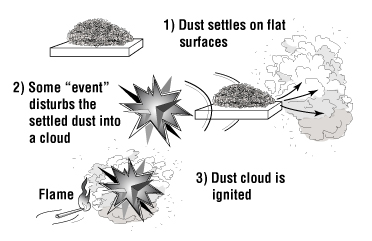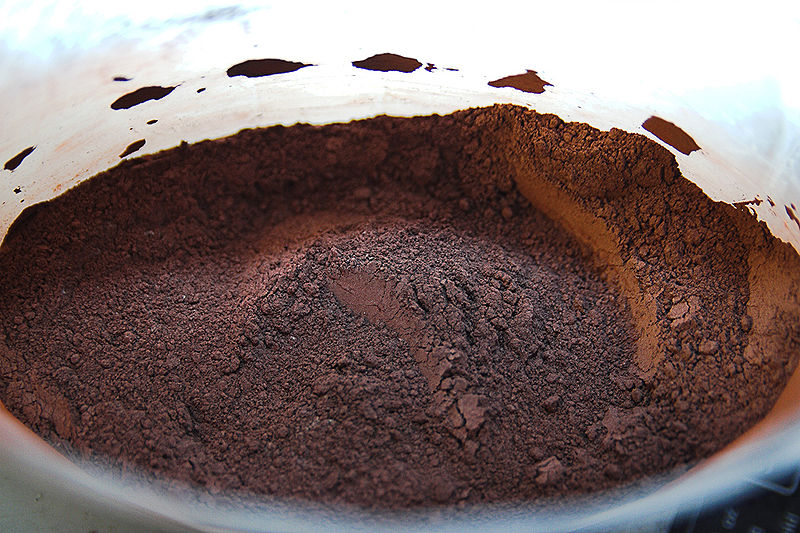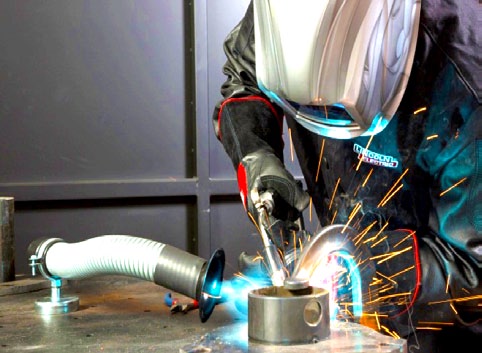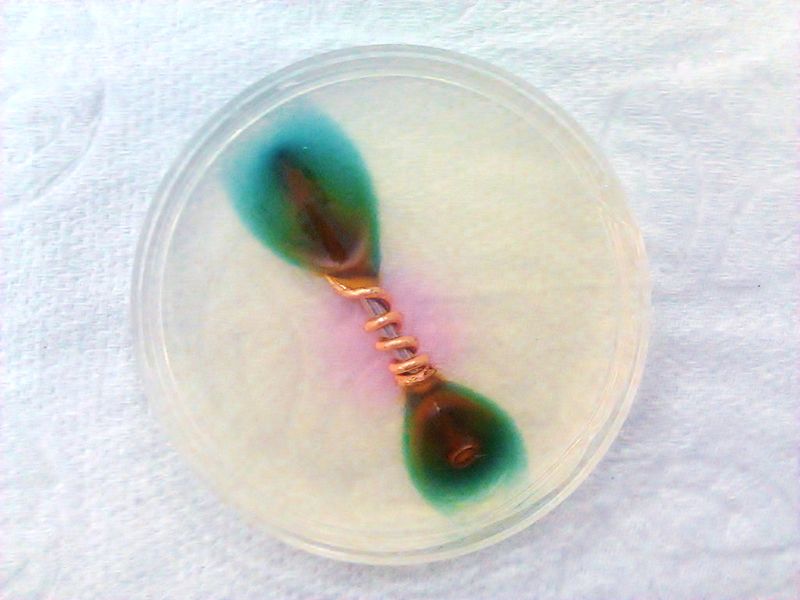Aluminum repair has been going on in the collision repair industry for many years on many different makes and models of cars, however, starting in 2015, Ford has announced that the nations best selling truck, the Ford F-150 is going to be made primarily out of aluminum. When an major auto industry leader makes a move like this, it typically means that aluminum construction on vehicles is only going to become more and more common and may eventually become a standard across many automotive brands.
Why is an aluminum repair station important for your shop?
In any collision repair facility, repair means the creation of dust and particles. Whether from sanding or cut-in, there will definitely be a build-up of dust and debris over time. Certain metals are highly combustible when in a particulate or powder-like form. One of them is, you guessed it, Aluminum. There are multiple reasons and several benefits to installing an aluminum work station or aluminum isolation station. The first and foremost reason is safety. The second reason is contamination control with regard to the auto repair and refinishing process.
Safety and The Dangers of Aluminum Repair
Since aluminum dust is a potentially hazardous material capable of explosion under the right conditions, it is highly recommended (and may be required by the shop’s insurance carrier) that the area where aluminum repair will be taking place, be isolated in order to contain the aluminum particulates that will surely be created. This way, maintaining the area is both easier and more effective. Cleaning up aluminum dust periodically or installing and aluminum dust extraction unit is much more effective when the shop is dealing with a contained or isolated area for aluminum work. Failure to isolate aluminum work areas can have disastrous results.
Cloud (Suspension) Type Explosion – In the example described below, fine aluminum dust and other contaminants have been allowed to accumulate onto horizontal surfaces in a facility and then at some point is disturbed into cloud form. Once in cloud form, the particles can be in perfect suspension with oxygen in the air and all that is needed for an explosion is a source of ignition. It could be from a welder, someone grinding and creatings sparks or just a plug that emitted a small spark when plugged in or unplugged. The result can be a powerful explosion.
As if this was not frightening enough, the initial cloud is actually just the beginning. Once the first “smaller” cloud is ignited and explodes, all the other accumulated dust on all the surfaces in the blast range are instantaneously disturbed into a much bigger cloud that ignites off of the first explosion and so on. The results of allowing aluminum dust to accumulate on surfaces can be absolutely deadly.
Thermite Reaction – Aluminum can be deadly in cloud form but can also cause explosive results if allowed to mix with other elements such as Iron Oxide (rust) and Magnesium which are also present in many repair processes today. If aluminum is allowed to mix with these elements, the dust mixture can spontaneously burst into flames in what is known as a Thermite Reaction.
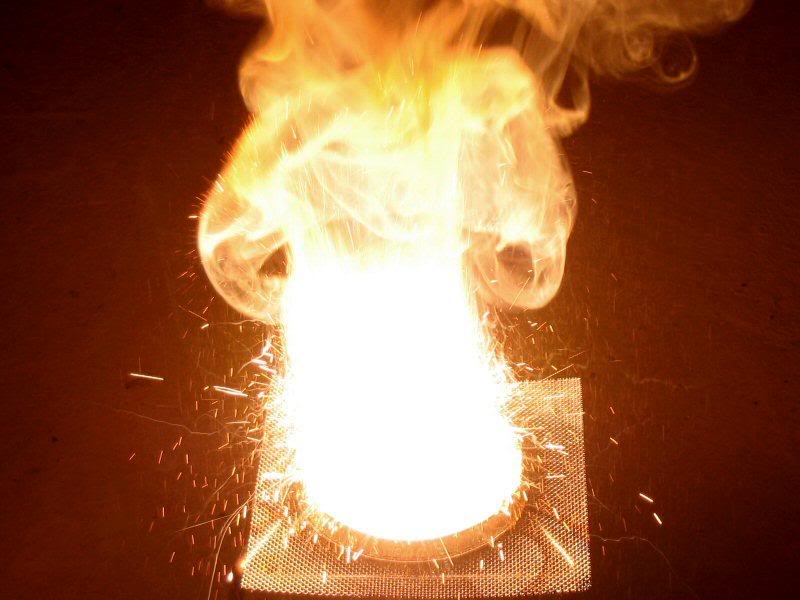
Example of thermite reaction
Fume Containment – Welding and cutting aluminum creates fumes that should be exhausted out of the work area according to OSHA safety code. Exposure to these fumes and contaminants can have ill effects on worker health.
Installing an aluminum repair isolation work station will allow workers to perform all necessary operations in a safe and healthy environment. Fumes from grinding and/or welding aluminum can be easily extracted via a spot vacuum style system or fume extraction unit.
Cross Contamination & The Collision Repair / Refinishing Process
Outside of safety for your facility and the people in it, the need for an aluminum isolation area or work station has practical, business related benefits as well.
Aluminum and steel do not get along chemically. Exposing the aluminum vehicles and parts in your facility to steel dust and particles causes cross contamination which results in potential damage and corrosion.
Galvanic Corrosion – Exposing aluminum to steel dust and particles causes galvanic corrosion. Aluminum and steel have different electrode potentials and thus create a anode/cathode relationship which results in the anode being corroded much faster than normal.

A spectacular example of galvanic corrosion occurred in the Statue of Liberty when regular maintenance checks in the 1980s revealed that corrosion had taken place between the outer copper skin and the wrought iron support structure. Although the problem had been anticipated when the structure was built by Gustave Eiffel to Frédéric Bartholdi’s design in the 1880s, the insulation layer of shellac between the two metals had failed over time and resulted in rusting of the iron supports. – Wikipedia
Contamination of aluminum vehicles or parts is a serious concern and may impact the quality of the repair or the finish if left unchecked. Performing all of your aluminum repair operations within an aluminum work station is an extremely valuable practice when you take into account all of the potential time and work that can be wasted if aluminum and steel operations are not kept segregated.
Effective Containment Systems
Containment systems for aluminum can be as simple as a curtain or partition. it is recommended that the ceiling be closed to help prevent dust entering or exiting the area in an airborne state up above the curtain. Curtain partition aluminum workstations or aluminum repair stations with closed and lighted ceilings are available and can also be outfitted to flow air at the right stages in order to prime and paint right in the same area without having to move the vehicle or part through the shop. This helps the work get done faster with less chance of steel/aluminum cross contamination. if you have a basic curtain system or lighted aluminum isolation station without airflow, be sure to locate it as close as possible to the prep area or paint booth.

Example of Curtained Aluminum Repair Isolation Work Stations
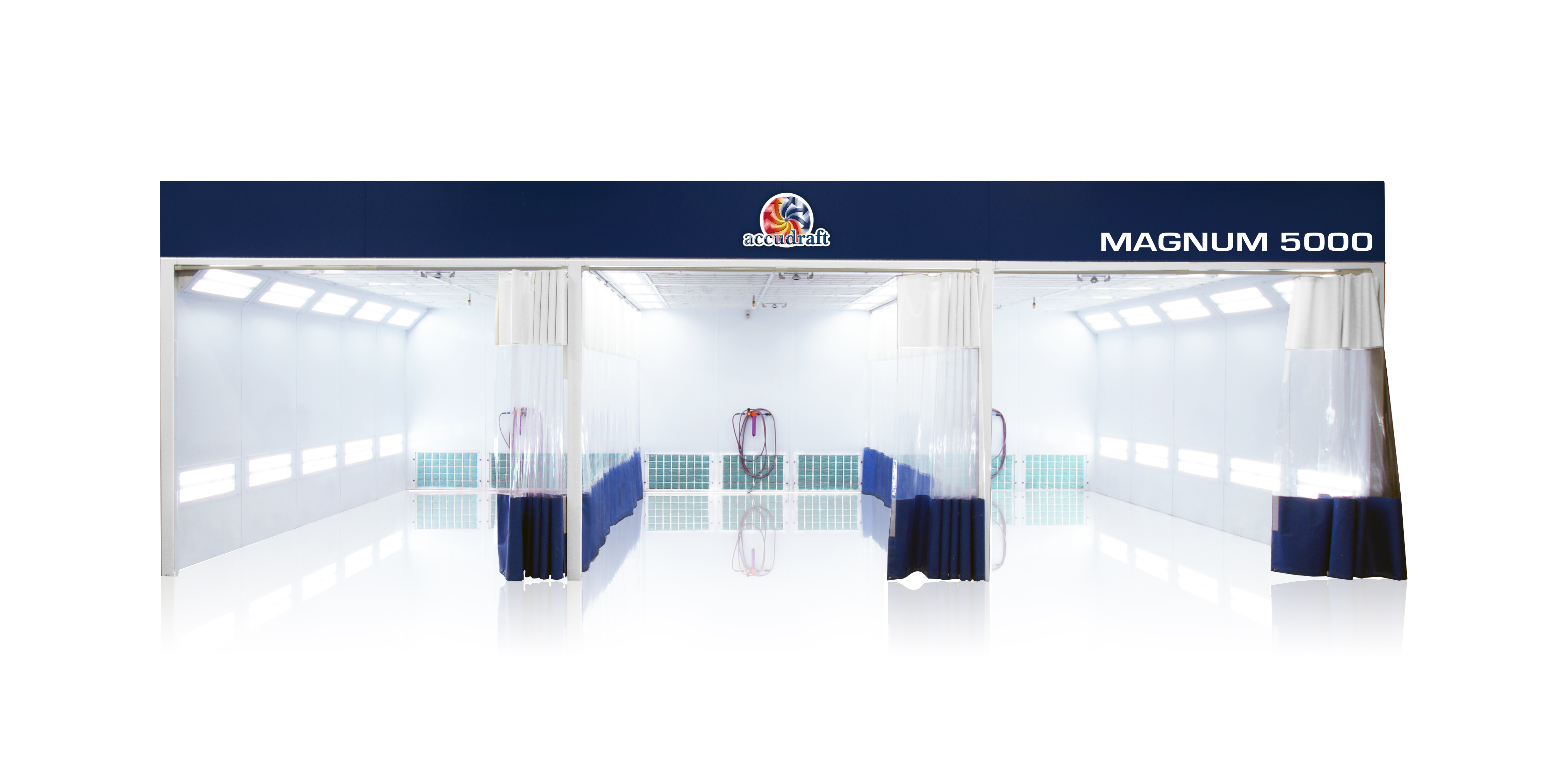
Example of Closed Top Aluminum Repair Isolation Station
Whatever your plans are for aluminum repair and the future of your collision repair facility, make sure you are taking the proper precautions and make sure you are ready for the increasing presence of aluminum in the automotive repair market. It is already changing the landscape of the typical collision repair facility and is a necessary tool to get aluminum repairs done right and in a safe fashion. We hope this has answered some of the questions out there and please don’t be afraid to post your questions right on our blog or social media pages.
